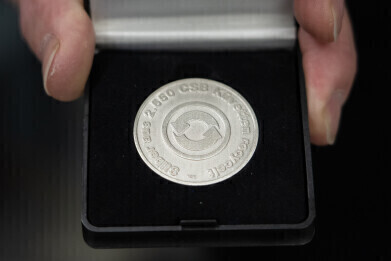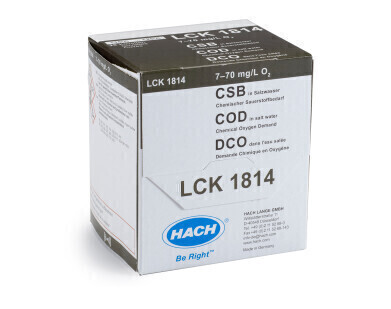Water pollution monitoring
Safe, reliable, easy COD analysis in high chloride water samples
Oct 10 2023
COD testing can be difficult in industrial or marine samples with high background chloride levels. However, Hach’s COD test kits enable safe, easy, and reliable COD testing from 7 – 1000 mg/L in water and wastewater samples with chloride concentrations up to 20,000 mg/L.
COD is a key measure of organic pollution, but some samples represent a greater analytical challenge. These include high concentrations of chloride in industrial samples or seawater.
When treated wastewater is discharged into the environment, it can introduce pollution in the form of organic compounds to receiving waters, and COD (Chemical Oxygen Demand) is a key measure of organic pollution. Reliable COD results are therefore extremely important since this parameter often determines the discharge fees, which represent large sums of money. The basis for the COD test is that nearly all organic compounds are fully oxidised to CO2 using dichromate under high temperature and strong acidic conditions. These harsh analytical conditions also oxidise chloride, but in standard COD tests mercury sulphate is used to mask chloride concentrations up to 1000 mg/L.
Higher chloride concentrations falsify the COD results, unless additional steps are taken. Simply diluting samples to concentrations lower than 1000 mg/L chloride is often not an option because of either too low COD concentrations or too high dilution factors resulting in false COD readings.
Today, many environmental laboratories still use the standard COD method (macro method according ISO6060 or similar national norms), manually adding additional mercury sulphate to the sample prior to digestion. Other laboratories perform a very complex chloride depletion, adding concentrated sulphuric acid to the sample. While cooling, the prepared sample is stirred (fume hood required) to remove excessive chloride as HCl.
These options often lead to a high level of uncertainty in COD results, and the materials are difficult to handle due to large amounts of highly toxic and corrosive reagents which are problematic and expensive to dispose of.
With Hach’s test kits LCK 1714, LCK1814 and LCK1914, new analytical methods are now available for the photometric detection of COD in saltwater samples. Three different measuring ranges cover COD concentrations between 7 and 1000 mg/L. The kits provide excellent comparability with standard method results, but offer the additional advantage of being much easier to handle.
Benefits of the new COD test kits for water samples that have up to 20,000 mg/L chloride:
- Easy to use - the method can be easily performed in all laboratories using Hach’s standard photometric equipment (DR3900 or DR6000 spectrophotometer, heating block).
- Accepted - the test kits are accepted by international environmental agencies.
- Safety at work - no direct contact with toxic reagents. The LCK cuvette test does not require: additional mixing of reagents; cumbersome sample pretreatment; titration, or glassware cleaning.
- Environmentally friendly - for most EU countries disposal of reagents at the certified Hach environmental centre in Dusseldorf is included with a 75% recycling rate of all test components. To mark specific anniversaries, a disk of solid silver is manufactured from recycled reagent.
Digital Edition
AET 29.2 May 2025
May 2025
Water / Wastewater- From Effluent to Excellence: Microbiological assessment of a containerized modular water reuse pilot system- Without water everything comes to a haltAir Monitoring- Probe Sampli...
View all digital editions
Events
Jun 10 2025 Toulouse, France
Jun 11 2025 Copenhagen, Denmark
Jun 17 2025 Guangzhou, China
Singapore International Water Week Spotlight 2025
Jun 23 2025 Singapore
Jun 24 2025 Santa Clara, CA, USA







.jpg)








.jpg)







